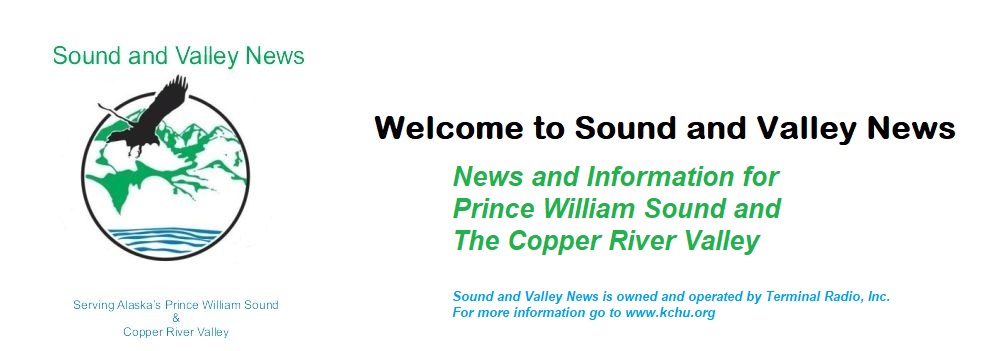
The Prince William Sound Regional Citizens Advisory Council, usually referred to as The RCAC, was formed in response to the Exxon Valdez oil spill. Their job is to oversee the oil transportation industry and its government regulators in Prince William Sound. A goal of the citizens’ council is to ensure that each vessel is appropriate for its intended use, and that the designs are optimal for ensuring the highest level of oil spill prevention and response capabilities to protect Prince William Sound and the downstream communities.
RCAC is concerned. They have issues with the design of the new tugs to be provided by Edison Chouest because they don’t seem to be equipped to handle less-than-ideal conditions in Prince William Sound, which are fairly common.
According to the report ‘A Review of Proposed New Escort and Support Tugs for Tanker Operations in Prince William Sound’ , some key concerns noted in the report include:
- The bow height is low for operation in Gulf of Alaska Conditions
- Design of forecastle deck invites pooling of ice and water during heavy weather.
- The performance predictions for the larger escort tugs are limited in scope and do not verify performance in the full range of operating conditions.
- The accuracy of the seakeeping predictions for the large escort tugs is in question.
- The indirect performance analyses were done only for calm conditions and for wind directly astern. Information provided does not identify performance in any cross-wind conditions.
- A large skeg, an extension of the vessel’s keel, moves the center of pressure towards the back.
- Moor lines, tow lines, winches and decks need to be free of ice and protected from freezing spray.
They also have issues with the fact that Edison Chouest does not appear to plan on performing tests and drills under less-than-ideal conditions. Amanda Bauer, RCAC Board President, was concerned enough to write an op ed piece about it, which was published in the Alaska Dispatch News.

Bauer, who has worked for Stan Stephens Cruises out of Valdez for 25 years, the last 10 of those years as a captain with a 100 Ton Masters License, knows about sailing conditions in Prince William Sound. Her stated concern, shared by other members of the council, is the belief that some drills and exercises should be conducted at, or near, “closure limits,” when the weather is severe enough to close Hinchinbrook Entrance, the main access for oil tankers entering the Sound. Currently, closure occurs at the Entrance when winds exceed 45 knots or seas exceed 15 feet. The fear is that crews will not be safe unless they have experience dealing with near closure conditions in a non-emergency situation. (link to full piece)
Both Alyeska and Edison Chouest were contacted for comments regarding the concerns stated above. No response had been received from Edison Chouest as of the time this story was posted. Alyeska did respond. That response appears below.
Alyeska’s Response;
Response to the RCAC memo:
Alyeska has reviewed the RCAC contractor’s report, which was written based on preliminary vessel information. Some report recommendations were identified and already incorporated into the vessel designs as part of the regular construction and design process. Other issues raised in the report are being considered. As part of the construction process, improvements to vessels are ongoing.
Alyeska gives thoughtful consideration to the input from RCAC. For example, the winches on these tugs are the type that RCAC recommended.
Significant expertise has gone into the design of these vessels and a number of organizations are involved in assuring they are ready for duty in Prince William Sound. They will be carefully assessed by the United States Coast Guard and the American Bureau of Shipping (ABS) against both regulatory requirements and industry best practices. To operate in Prince William Sound, vessels will need to be approved by both the USCG and the Alaska Department of Environmental Conservation for use in the PWS Tanker and Valdez Marine Terminal Contingency plans.
The tugs that are being built for Alyeska are purpose-built for operating in Prince William Sound in compliance with the Contingency Plan. They are a solid improvement over the current fleet and will be among the most high-performing tugs in the world.
|
|
Response to the Bauer Op-Ed:
Undertaking an exercise in closure/near closure conditions poses an unacceptable risk the people who work on TAPS. To conduct such an exercise would put people in harm’s way unnecessarily and is entirely inconsistent with our safety culture.
There are many ways we train for and demonstrate capability. Each mariner has very specific training and experience that is required to become a mate, captain or other role on the vessel. The mariners who work in the response system will also have specific SERVS and Prince William Sound training. They will have training specific to the vessels they operate. They will participate and demonstrate capabilities in drills and exercises – both those that are required and those we do beyond requirements, this includes escort, tether and towing drills. They will also complete simulator training.
Oil spill prevention and response workers are trained for emergency operations in unpredictable conditions. But they do not need demonstrate operations in uncontrolled, unsafe conditions.
Here’s an example from the firefighting industry. Firefighters train, drill and exercise in scenarios where the hazards are controllable (fuel sources can be stopped, building structure is understood). Some years ago, fire departments used to acquire structures and conduct live fire exercises in them; firefighters died in those scenarios. Those fatalities led to standards and regulations that ensure live fire training is conducted in safe facilities in a safe manner for participants. This includes controlling hazards.


